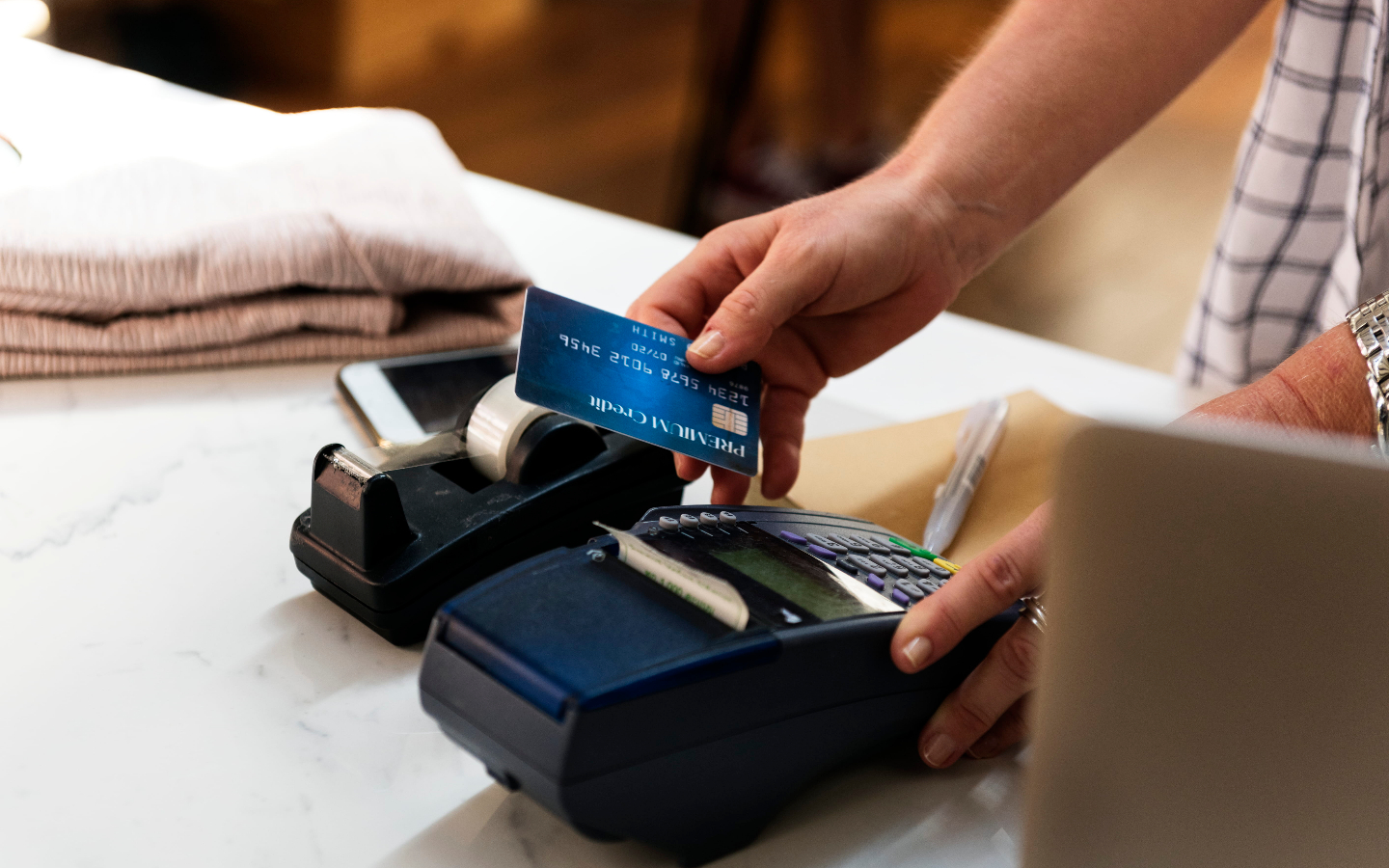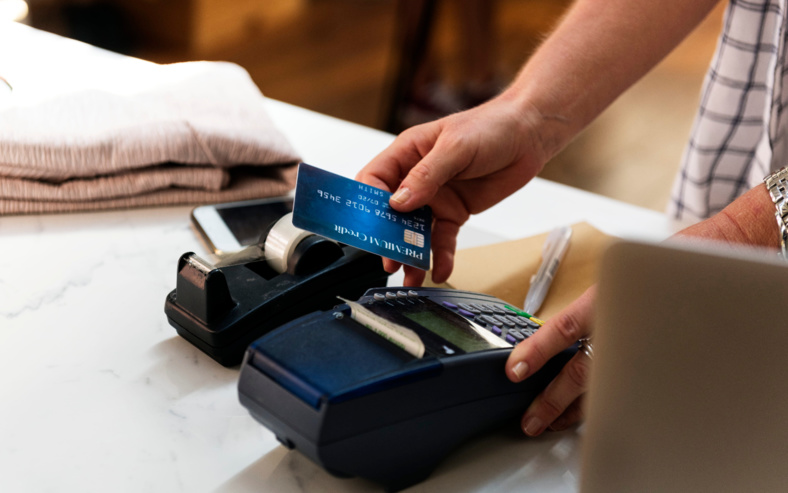Amidst fears of spreading and catching coronavirus, consumers are reviewing which daily gestures cause the most contamination. At first, banknotes seemed an obvious culprit. But a German Institute has dispelled that notion, and reminded that cash is a very poor vector, whereas credit card terminals are a dream-come-true for the virus.
COVID19, like any other virus, has a life-span. Of course, its dream is to infect a cell, where it has a cosy place to breed, develop and send out new viral material, for extra contamination. But once the viral material is produced, it needs a way to transfer to a new host. Coughing droplets are great for that, but how often do people into each other’s faces? So, the next best thing is for the virus-infected droplets to fall on a surface and simply wait for some new host to touch it, betting on the fact that the tainted hand will soon reach the mouth (after 20 minutes, on average). What surface the droplets falls on, however, will prove crucial for the end of the story. Indeed, recent research has proven that viral material stayed active for varying periods of time, according to what they lay on. Live Science reporter Yasemin Saplakoglu writes : “A new analysis found that the virus can remain viable in the air for up to 3 hours, on copper for up to 4 hours, on cardboard up to 24 hours and on plastic and stainless steel up to 72 hours. This study was originally published in the preprint database medRxiv on March 11, and now a revised version was published March 17 in The New England Journal of Medicine.” Keep those figures in mind, this is where it gets interesting.
So, one day on paper, on average, and three days on plastic. Naturally, one must ask oneself at what rhythm banknotes change hands. Luckily, there is available data for that too. As it turns out, paper does not move anywhere near fast enough to be a significant vector for viral contamination. Studies in the UK show all banknotes to change hands at a slower rate (1.5 days to 60 days, according to the type of note). US dollar bills change hands every 3 or 4 days. On average, it takes 7 days for a bill to change hands - and, by then, the viral material has long gone extinct. But what about credit card terminals, with plastic pin pads (remember, up to three days on plastic)? How often are they used? Well, credit card providers are kind enough to give us that data online. Even the basis of the lowest thresholds, 15 million card payments per year amount to a strict minimum of 41 000 credit card transactions every day, spread out on a few dozen pin pads. So, in a nutshell, picture a row of check-out counters at a supermarket, where one unknowing covid19-carrier comes through in the morning, touching the keys on the pin pad. In the lifespan of the virus on those keys, thousands are exposed to contamination. The banknote which was handed earlier on, however, will presumably spend several days in a bank vault after that, effectively “starving” the virus.
In response to numerous popular fears, a research center for infectious diseases in Germany has dispelled myths about currency being a prime vector for the contamination. Reuters reports: “Handling banknotes doesn’t pose a particular risk of contracting coronavirus, the head of Germany’s Robert Koch Institute (RKI) for infectious diseases said on Wednesday. “(Virus) transmission through banknotes has no particular significance,” RKI head Lothar Wieler told Reuters, adding that droplets from infected individuals were the main infection risk. His remarks appeared to contradict those of World Health Organisation (WHO) officials who have advised people to wash their hands after handling banknotes.” Indeed, Germany is known for being the European nation to use the most cash, and is in fact resisting the pandemic remarkably well.
As often, danger is no where it was initially thought to be. The W.H.O. added to the confusion, when it recommended to wash hands just after using cash. While the hygenic rule is laudable (our grandmothers were telling us to do this, long before the virus outbreak), it was interpreted by the population as an indication of where the danger was. As a result, many people moved away from cash, for several days, opting for credit card payments, with no doubt numerous infections needlessly caused.
COVID19, like any other virus, has a life-span. Of course, its dream is to infect a cell, where it has a cosy place to breed, develop and send out new viral material, for extra contamination. But once the viral material is produced, it needs a way to transfer to a new host. Coughing droplets are great for that, but how often do people into each other’s faces? So, the next best thing is for the virus-infected droplets to fall on a surface and simply wait for some new host to touch it, betting on the fact that the tainted hand will soon reach the mouth (after 20 minutes, on average). What surface the droplets falls on, however, will prove crucial for the end of the story. Indeed, recent research has proven that viral material stayed active for varying periods of time, according to what they lay on. Live Science reporter Yasemin Saplakoglu writes : “A new analysis found that the virus can remain viable in the air for up to 3 hours, on copper for up to 4 hours, on cardboard up to 24 hours and on plastic and stainless steel up to 72 hours. This study was originally published in the preprint database medRxiv on March 11, and now a revised version was published March 17 in The New England Journal of Medicine.” Keep those figures in mind, this is where it gets interesting.
So, one day on paper, on average, and three days on plastic. Naturally, one must ask oneself at what rhythm banknotes change hands. Luckily, there is available data for that too. As it turns out, paper does not move anywhere near fast enough to be a significant vector for viral contamination. Studies in the UK show all banknotes to change hands at a slower rate (1.5 days to 60 days, according to the type of note). US dollar bills change hands every 3 or 4 days. On average, it takes 7 days for a bill to change hands - and, by then, the viral material has long gone extinct. But what about credit card terminals, with plastic pin pads (remember, up to three days on plastic)? How often are they used? Well, credit card providers are kind enough to give us that data online. Even the basis of the lowest thresholds, 15 million card payments per year amount to a strict minimum of 41 000 credit card transactions every day, spread out on a few dozen pin pads. So, in a nutshell, picture a row of check-out counters at a supermarket, where one unknowing covid19-carrier comes through in the morning, touching the keys on the pin pad. In the lifespan of the virus on those keys, thousands are exposed to contamination. The banknote which was handed earlier on, however, will presumably spend several days in a bank vault after that, effectively “starving” the virus.
In response to numerous popular fears, a research center for infectious diseases in Germany has dispelled myths about currency being a prime vector for the contamination. Reuters reports: “Handling banknotes doesn’t pose a particular risk of contracting coronavirus, the head of Germany’s Robert Koch Institute (RKI) for infectious diseases said on Wednesday. “(Virus) transmission through banknotes has no particular significance,” RKI head Lothar Wieler told Reuters, adding that droplets from infected individuals were the main infection risk. His remarks appeared to contradict those of World Health Organisation (WHO) officials who have advised people to wash their hands after handling banknotes.” Indeed, Germany is known for being the European nation to use the most cash, and is in fact resisting the pandemic remarkably well.
As often, danger is no where it was initially thought to be. The W.H.O. added to the confusion, when it recommended to wash hands just after using cash. While the hygenic rule is laudable (our grandmothers were telling us to do this, long before the virus outbreak), it was interpreted by the population as an indication of where the danger was. As a result, many people moved away from cash, for several days, opting for credit card payments, with no doubt numerous infections needlessly caused.















